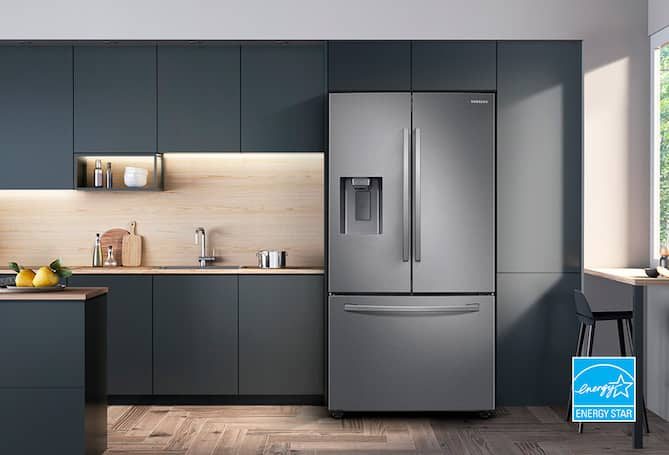How to Choose Eco-Friendly Kitchen Appliances

carousel
Help the environment while adding style and function to your home
- Only get appliances you need
- Choose an efficient size
- Look for the ENERGY STAR sticker
- Consider an electric stove rather than gas
- Pay special attention to your refrigerator
You likely use your kitchen every day and it’s said to be the heart of every home. If you strive for sustainable living as a personal goal, you’ll want to choose eco-friendly appliances when designing a new space or upgrading existing units. An eco-friendly kitchen results in less energy resources used, less waste created and lower monthly utility costs. Read this guide to learn how to assess your home's constraints and requirements to find appliances that not only fit your needs but also and are kind to the environment.
Only get what you need
It’s easy to get distracted by shiny and new kitchen gadgets and appliances that offer multiple high-tech features. Although they sound fun to use and look neat, many appliances end up using lots of energy. Rather than buying multiple appliances that have only one function, opt for devices that offer more than one operation, such as toaster ovens or pressure cookers. These items are helpful if you often prepare small meals that don’t require the vast space in a regular oven.
Many sustainable kitchen appliances also allow for special add-ons and accessories, but these may drive up the price or energy consumption. Ask yourself if you really need these bonus features and consider choosing more basic models.
Choosing an efficient size
Look for the ENERGY STAR sticker
Consider electric vs. gas
Pay special attention to your refrigerator
Rather than wondering what the most energy-efficient appliance in your kitchens is, think of which one is the least energy-efficient and replace that one. The refrigerator is the third-highest energy user in most homes and the highest energy user overall in most kitchens. For example, a 17-20 cubic foot model uses an average of 205 kilowatt-hours (kWh) per month.
Eco-friendly refrigerators may help cut down on the amount of energy used while performing at the same level as their counterparts. Look for a model that holds everything you need without overloading so it won't have to work too hard to keep everything cold. Side-by-side fridge and freezer configurations use more power, so opt for one that has a top or bottom freezer. Ice makers and water dispensers may seem convenient, but they use more power as well. Consider a basic model without extra costly features.
Work with what you have
Perhaps new appliances aren’t currently in the budget. Until you have the funds to swap out old for new, you can reduce your energy consumption by changing your habits or your kitchen's configuration. If you’re able to move things around, don't put your oven next to your fridge. This way, the refrigerator won't have to fight extra heat to keep food cool. Use biodegradable pods or filters in your coffee maker to cut down on waste. Let food cool entirely before putting it in the fridge and freezer, so it takes less energy to freeze. When boiling anything on the stove, cover pots and pans so they take less time to heat. These may seem like simple ideas, but they can make a significant difference over time.
Turning your kitchen into an eco-friendly space is possible by changing appliances and slightly modifying daily habits. Before shopping, analyze what you use often, how much space you have and what appliance features you need. When you follow these tips, you'll see a lower energy bill and you’ll feel good knowing you are helping the environment.